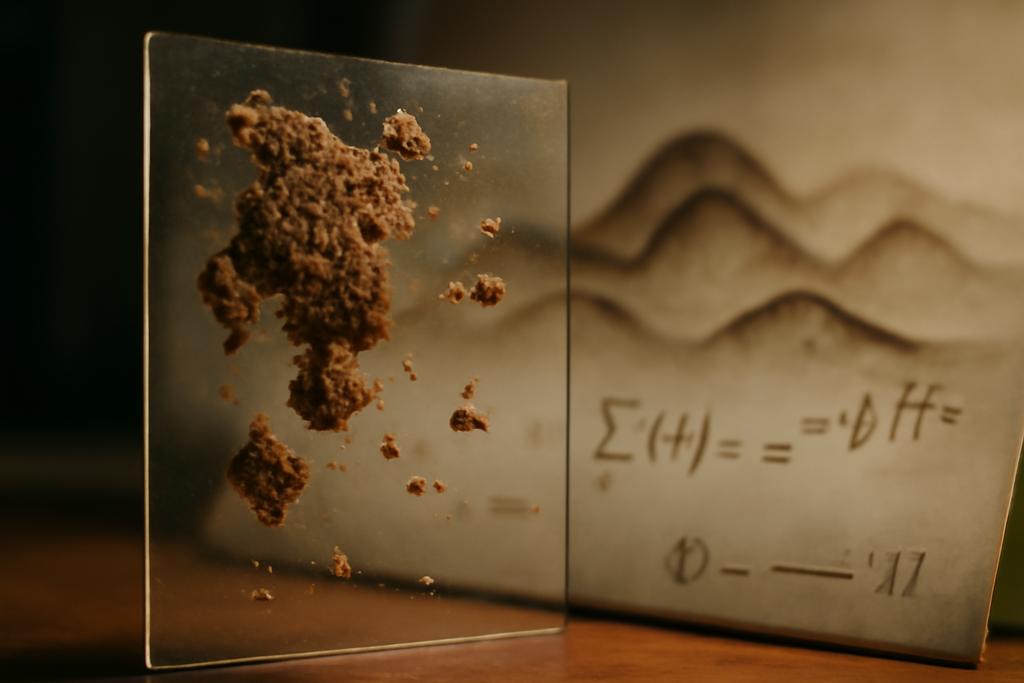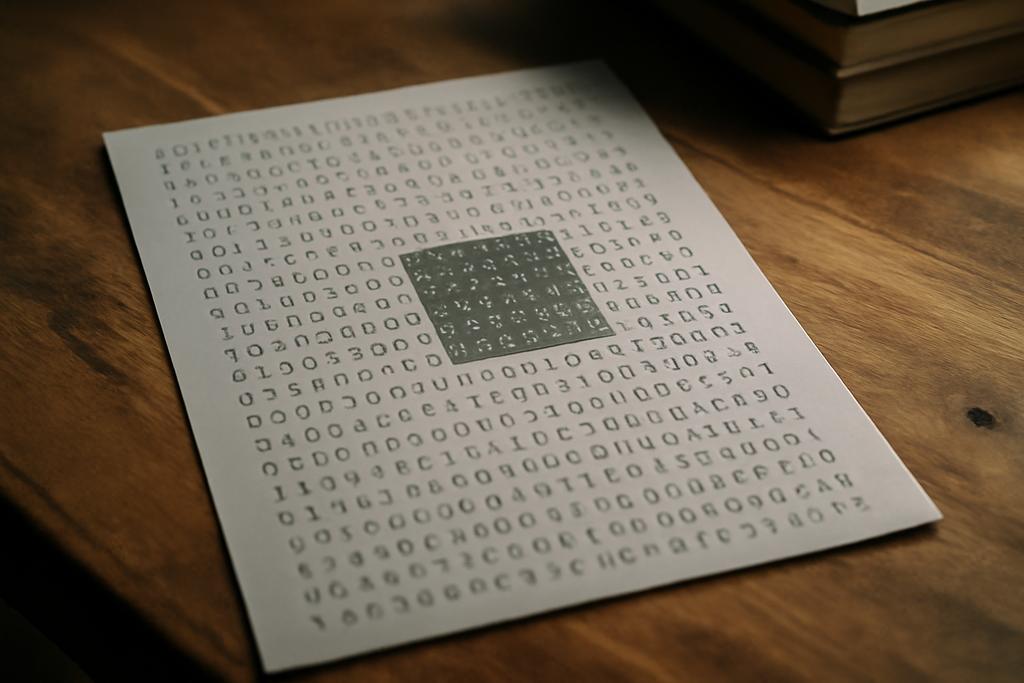Wormholes have always hovered between science and myth—the imagined tunnels through spacetime that could, in principle, connect distant regions of the cosmos. A new study from the University of Texas at Dallas, led by Travis Rippentrop, Avijit Bera, and Mustapha Ishak, digs into a pressing question behind that science-fiction gloss: can these thin-walled bridges stay put when the universe rumbles around them? The researchers don’t just doodle on blackboards; they tackle the stability of thin shells that supposedly hold a wormhole open. Their answer is nuanced, methodical, and a little bit sobering: in the causal, physically meaningful regime, wormhole throats tend to be unstable once you perturb them. Black holes, by contrast, behave differently depending on the surrounding cosmic backdrop.
To get there, the team leans on a classic toolkit in general relativity known as the thin shell, or Darmois-Israel, formalism. Picture two separate universes or spacetime regions stitched together along a thin boundary—the wormhole’s throat. The boundary carries its own energy and pressure, like a soap bubble with a stubborn surface tension that resists being pinched or stretched. The math translates the geometry of the two sides into an equation of motion for the throat, and then a stability test: does a small wiggle grow into a catastrophe or settle back into place? This isn’t just math for math’s sake. The stability map tells us whether a wormhole could, in theory, persist long enough to be astrophysically meaningful, or if it would snap shut or collapse into a black hole the moment you poke it.
What makes the UT Dallas team’s work especially rich is the way they asked the same question across a family of cosmic backdrops. They didn’t confine themselves to one clean spacetime, but explored combinations built from Schwarzschild black holes, with and without cosmological constants (de Sitter and anti-de Sitter variants), and even grafted these onto the expanding universe described by the Friedmann-Lemaître-Robertson-Walker (FLRW) metric. In short: they built a taxonomy, a map of where stability might hide, and where it vanishes. The result isn’t a triumphant blueprint for stable wormholes, but a clear, useful layout of what the physics actually allows—and what it doesn’t.
Thin Shells and Soap-Bubble Spacetime: The Core Picture
At the heart of the analysis is the idea that the wormhole throat is the boundary where two spacetime regions meet. The boundary carries a surface energy density and surface pressure, concentrated in an infinitesimally thin layer. It’s a bold simplification—too thin to be literal, yet powerful enough to capture the essential gravitational tug-of-war. The math formalizes this with the extrinsic curvature, a geometric measure of how the two sides bend away from the boundary. The difference in curvature across the throat gives rise to a surface stress-energy that acts like a membrane with tension and inertia.
From there, you get an equation of motion for the throat radius R(τ), where τ is the proper time of observers riding along the boundary. The throat behaves like a particle moving in an effective potential V(R). A static wormhole corresponds to a point where V(R) has a minimum (V(R0) = 0 and V′(R0) = 0). Stability means the second derivative V″(R0) is positive: a small push makes the throat oscillate around R0 rather than run away. The sign and size of the shell’s mass M, the energy conditions on the shell, and how the two adjoining spacetimes differ all feed into that potential. The upshot is a practical criterion: if the second derivative is positive, you’ve found a stable equilibrium; if not, perturbations derail the structure.
Two technical knobs repeatedly shape the stability landscape. One is the asymptote condition, a curve in the parameter space where a quantity called Υ vanishes. Crossing this curve reshapes which regions of parameter space can harbor stable configurations. The other knob is the mass difference across the junction, denoted [m], which, when set to zero, can suppress certain instabilities and produce a clean, simple stability picture in some cases. A wormhole tends to show an asymptote and a stability region that sits away from the causal, physically meaningful regime where perturbations respect the speed of light. It’s a cautionary tale: even when the math allows a wormhole, the universe’s dynamics may keep it from being a lasting, traversable conduit.
A Taxonomy of Cosmic Junctions: What Stays Stable and What Won’t
The UT Dallas team systematically built and scanned 18 junction configurations, formed by pairing Schwarzschild-like spacetimes with Schwarzschild–de Sitter, Schwarzschild–anti-de Sitter, and FLRW cosmologies. They separated black-hole junctions from wormhole junctions and then tracked how stability regions appeared or vanished as you moved R, the throat radius, and other parameters. Across these families, one pattern stood out: wormhole junctions always exhibit a conspicuous asymptote in Υ = 0, slicing the parameter space into two lobes. Region A sits closer to the mass-scale origin, while region B stretches out to larger throat radii. Neither region — in the cases that matter physically — typically overlaps with the causal region where perturbations propagate sub-luminally. In other words, even when a wormhole looks mathematically viable, the scenario in which perturbations remain well-behaved and causal tends to lie elsewhere.
Black-hole junctions present a somewhat more forgiving story, but with a caveat. Many of the black-hole configurations feature a stability surface that sits below a lower boundary (A) and above an upper boundary (B). The stability regions often lie outside the causal window, yet there are cases where a stability flip happens as you vary M or Υ—meaning the region where the throat would be stable switches from above to below the stability surface. The big takeaway is a practical map: if you insist on a physically safe regime—where sound speeds remain real and sub-luminal—the wormhole options retreat far from that shoreline, while some black-hole junctions flirt with stability under specific, tightly constrained conditions. The paper’s tables summarize this taxonomy, contrasting asymptote behavior and large-radius limits across the different spacetime pairings.
Expanding Universes and the Cursor of Time: FLRW Joins the Game
One of the paper’s most interesting moves is to bring in FLRW cosmologies, the standard way physicists describe an expanding, changing universe. When you glue a Schwarzschild region to an expanding FLRW background, new terms creep into the throat’s dynamics. The expansion of space itself acts a bit like a negative mass term in the effective equation of motion. It can push the event horizon radius inward, and it reshapes the stability landscape in subtle, intuitive ways: a throat that might be on the cusp of instability in a static backdrop can be stabilized—or at least altered—by cosmic expansion, and vice versa.
Mathematically, the FLRW contribution shows up as an evolving scale factor a(t) and a Hubble parameter H that enter the expression for the shell’s effective mass M and the Kθθ components that determine the extrinsic curvature. The upshot is that expansion does not rescue wormholes from instability. Across the samples they studied, wormhole configurations in FLRW contexts still fail to land in the causal, stable regime. Black holes, when connected to an expanding cosmos, continue to follow the broader pattern: their stability regions exist in a structured separation, often below surface A and above surface B, but the presence of expansion shifts and reshapes those boundaries in ways that make robust, traversable wormholes even less likely in a realistic universe.
What’s fascinating here is not a single triumphant verdict but a coherent narrative about how local geometry and global cosmology talk to each other. The mathematical structure—the effective potential, the asymptotes, the mass differences, and the conservation identities—behaves consistently across static spacetimes and dynamic FLRW backgrounds. The authors’ careful taxonomy lets us see that the problem isn’t just “are wormholes possible?” but “under what precise cosmic and geometric conditions could a wormhole be stable enough to matter?” The answer, at least in the causal, physically admissible sense and within the thin-shell framework, is sobering: stable wormholes don’t seem to pop out of these standard gravitational setups, even when you let the universe expand around them.
Key takeaway: the study doesn’t close the door on wormholes, but it closes a dozen doors you might have naïvely hoped were open. The stability regions lie far from the causal regime where perturbations stay physical, especially for wormholes. The result aligns with prior work suggesting that exotic matter and unusual conditions are likely prerequisites for lasting wormholes, at least within the semi-classical, thin-shell picture.
Why This Matters: A Concrete Map at the Edge of Physics
Why should curious readers care about a stability analysis of hypothetical spacetime tunnels? Because it makes a long-standing dream of “bridges through the cosmos” tangible in the language of physics rather than rumor. The paper puts to rest a tendency to treat wormholes as purely mathematical curiosities or science-fiction props. It shows there is a disciplined, predictive framework—one that ties the geometry of matching spacetimes to the dynamical behavior of a boundary layer, and then to the fundamental constraint of causality. The result is a taxonomy that can guide future theorists who want to explore less conventional gravity theories, rotating wormholes, or matter models beyond the idealized thin shell. The more we can map where stability exists, the better we can test the limits of our theories and understand whether nature might ever permit such structures, even if just as fleeting mathematical artifacts.
Crucially, the paper is a reminder that gravity loves structure. The same equations that permit the most exotic solutions also impose stringent conditions on stability. The authors’ careful separation of black-hole and wormhole configurations, and their explicit treatment of how a cosmological constant and cosmic expansion tilt the balance, shows that even minor changes in the backdrop ripple through the throat’s dynamics. It’s a potent reminder that the universe does not treat wormholes as mere curiosities; it subjects them to the same rules that govern everyday stars and galaxies—but with a twist that only appears when you peer at the boundary that ties two regions of spacetime together.
The study’s institutional home—the University of Texas at Dallas—teams with authors Travis Rippentrop, Avijit Bera, and Mustapha Ishak, who push the frontiers not just of abstract theory but of how we categorize and visualize stability in complex spacetimes. The work is a reminder that progress in fundamental physics often comes not from sensational breakthroughs but from mapping, with meticulous care, what is and isn’t possible within established frameworks. If wormholes remain in the realm of speculation for now, this kind of work makes the speculation richer, more precise, and more navigable for anyone curious about what reality would have to look like for them to exist at all.
Bottom line: the cosmos may tempt us with the fantasy of shortcuts through spacetime, but the stability map drawn by Rippentrop, Bera, and Ishak suggests that, under conventional gravity and realistic conditions, those shortcuts aren’t stable enough to survive the universe’s perturbations. The door isn’t slammed shut forever; it’s closed with a careful, well-lit latch, and labeled with the physics that govern what’s possible, what’s probable, and what would require new physics altogether to bend the rules.










